First and foremost, I am a chef, not a doctor, nutritionist, or scientist. My experiments are with ingredients, not test tubes. You wouldn’t want a doctor writing recipes (many have), but you should consult a doctor or nutritionist before making changes to the way you eat.
You should also understand that my explanation of how low-carb works is extremely simplified and based on my own experience of losing weight. The specifics of what is actually happening inside the body to lead to weight loss is beyond the scope of my lowcarb recipe writing skills, but something you may want to further research. I would highly suggest Dr. Atkins New Diet Revolution, as that is the book that we read before starting our own personal journeys. It’s very long, very technical, but pretty much the go-to reference book on low-carb by the man who started it all, Robert Atkins.
Now, reading a 500+ page reference book isn’t exactly “Quick & Easy,” so here is my simplification of why and how low-carb works.
STORING FAT
The concept of eating low-carb is actually quite simple to explain. Our bodies are capable of converting either carbohydrates or fat into the energy needed to function; however, our bodies prefer carbohydrates when they are available. Eating a diet full of carbohydrates causes the body to burn only the carbs necessary to get through the day before then converting the remaining carbohydrates into fat, which is then stored—alongside the actual fat you eat— in the event there ever comes a time when excess fat is needed for survival. This is the reason that overeating leads to weight gain. When eating an abundance of carbohydrates alongside fat, we are similar to bears storing fat for hibernation in the winter.
BURNING FAT
Your body can also create energy from fat when it is not supplied with an ample amount of carbohydrates. By converting fat into energy, your body goes into a constant fat-burning state known as “ketosis.” Not only do you burn the fat that you eat, you can also burn through your reserved fat. Most people find it hard to grasp why lowcarb allows you to eat fattier foods. There’s a simple explanation—your body burns it right off.
Entering the “ketosis” state is easily achieved; simply stop eating processed carbohydrates. If you are looking to lose weight, staying in a state of ketosis is important to success. Cheating on a lowcarb lifestyle will take your body out of ketosis and stop burning fat.
For me, the best judge of whether my body was in ketosis, was whether I was losing weight from week to week (don’t weigh yourself daily or you’ll go crazy). That said, you can also purchase very inexpensive test strips at most pharmacies or superstores. They will be labeled as “ketone test strips,” as they measure the ketones in your body. Some blood sugar meters can also measure ketones. Testing is really unnecessary unless you have stalled on losing weight. In that instance, you can use these test strips alongside eliminating specific foods to determine whether a food you are eating is knocking you out of ketosis.
THE LOW-CARB LIFESTYLE
I refer to low-carb as a “lifestyle,” as it works best when you eliminate processed carbohydrates completely, without cheating. This is how you achieve ketosis full-time for the maximum benefit.
If you have a lot of weight to lose, I’d highly suggest you go all-in on low-carb. Embrace the lifestyle and eat great tasting, fresh foods every day. It absolutely changed my life and the lives of my family.
FOODS TO AVOID
You can’t succeed on low-carb if you don’t know which high-carb foods to avoid. Refined grains, sugars, and starches— otherwise known as “the white stuff”— are not a part of a low-carb lifestyle. This includes:
- Flour and all wheat products (bread, pasta, cereal, crackers)
- Sugar (all types, including honey and maple syrup)
- White potatoes and potato products
- Corn products (including cornstarch)
- High-sugar fruits (bananas, mangos, grapes, watermelon, etc.)
- Fruit juice
- Beans
- Milk (cream is fine, but milk has more lactose, which is a form of sugar)
SHOPPING SMART
When grocery shopping, the best rule of thumb is to shop the outer aisles of the store. This is where all of the fresh, naturally lowcarb foods are located. The meat, dairy, and produce sections should be your main focus when shopping, as you avoid the inner aisles where the processed junk foods are stacked a mile high.
A key to long-term success is to never let temptations into your cart in the first place. If they don’t end up being purchased, they don’t end up in your pantry, and don’t get snacked on! Instead, stock up on low-carb snacks like fresh vegetables, cheese, nuts, and seeds.
READ THE LABELS
No matter how hard I’ve tried, I can’t completely avoid some packaged food items (such as tomato sauce or paste). When buying anything with a nutritional label, always read the ingredients! Food manufacturers hide sugar and starches in just about anything they can. If you can’t make something yourself, you should at least be aware of what is in it.
Simply checking the carb counts on the label is usually not enough, as some products can fall below certain levels (especially products with very small serving sizes), and claim they have zero carbohydrates, even if they contain sugar. A good example of this is non-dairy coffee creamers. They are usually pretty low in carbs, yet they usually contain mostly high-fructose corn syrup and partially-hydrogenated vegetable oil— also known as trans-fat.
COUNTING CARBS
Our family has always made it a point to not count each and every gram of carbohydrates or calories. It is our belief that if you stock your home full of great natural foods and do your best to not “cheat,” you’ll be eating well enough to see results. I’ve found that, for many people, counting carbs can lead you to eat worse when trying to save up or “bank” those extra carbs in order to eat something you probably shouldn’t be eating at all. Starving yourself all day to eat an entire pie before bedtime has and never will be a good choice.
We suggest you set yourself free from those numbers altogether, and eat only what is essential for success. Yeah, we know, we know, it is a tough urge to let go of, but trust us—it’ll do wonders for your sanity! Get too caught up with counting, and eventually you’ll find yourself doing long division on the walls.
Hopefully this “Quick & Easy” info will help get and keep you going on your lowcarb journey and I have included a couple of my favorite recipes for you below ~ ENJOY!
Keep On Low-Carbin’!
George Stella
For tons more low carb recipes, ideas, and support please visit:
www.StellaStyle.com
www.facebook.com/LowCarbingAmongFriends
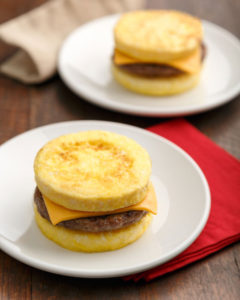 Inside-Out Egg Sandwichs
Inside-Out Egg Sandwichs
~ Sausage and Cheese between Egg Patty “Biscuits”
Recipe by George Stella / StellaStyle.com
Calories: 360 | Fat: 29.5g | Protein: 20g | Total Carbs: 0.5g – Fiber: 0g = Net Carbs: 0.5g
They’re called egg sandwiches for a reason. Because egg is the most important part! Here, I’ve found a fun, low-carb way to reinvent a classic breakfast sandwich that gets rid of all that heavy, bready, filler, and doubles down on the good stuff…the egg!
Ingredients
- Nonstick cooking spray
- 1 tablespoon unsalted butter
- 4 large eggs
- 1⁄8 teaspoon salt
- 1⁄8 teaspoon black pepper
- 2 breakfast sausage patties, cooked
- 1 slice deluxe American cheese, halved
Instructions
- For the best looking results, use 3-inch metal ring molds or cookie cutters to prepare the egg patties. Spray ring molds with nonstick cooking spray to prevent sticking. See below for an alternative method using a standard muffin pan.
- Place 1 tablespoon of butter in a large nonstick skillet over medium heat.
- In a mixing bowl, whisk together eggs, salt, and pepper.
- Place 4 metal ring molds over the melted butter in the skillet. Spoon 1⁄4 of the seasoned eggs into each.
- Add a splash of water to the pan and immediately cover to steam the eggs inside the molds. Cook until eggs have set, about 4 minutes.
- Remove egg patties from molds. Assemble sandwiches by placing 1 sausage patty atop an egg patty, then topping the sausage with 1⁄2 slice of American cheese.
- Place another egg patty over the cheese to finish each sandwich. The heat of the sausage and eggs should melt the cheese, however you can also microwave the finished sandwich for 15 seconds if the ingredients have cooled.
Helpful Tips
Fresh breakfast sausage patties are best, as they do not have unnecessary filler ingredients that many pre-cooked patties can have.
Egg Patty Baking Method:
Preheat oven to 350°F. Grease 4 muffin cups with butter or nonstick cooking spray, and then pour an equal amount of the egg mixture into each. Bake for 12–15 minutes, just until eggs have set
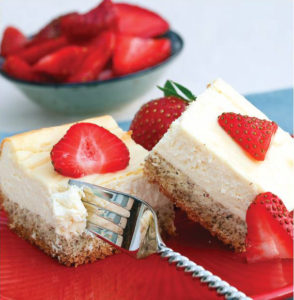 Cheesecake Squares
Cheesecake Squares
Recipe courtesy George Stella / StellaStyle.com
Prep time 15 mins | Cook time 45 mins | Chill time 2+hrs | Serves 16
Calories: 155 | Fat: 14g | Protein: 5g | Fiber: 1g | Net Carbs: 1.5g
My Stella Style New York Ricotta Cheesecake is most definitely my signature recipe. Rachel and I have made many variations on it over the years, but this time I gave Rachel a pretty tall order: make it easier and make it in less than the original 4 hours in the oven! We found that spreading them out into bars and removing the ricotta kept all of the flavor intact, while cutting the oven time down to just 45 minutes!
Ingredients
- nonstick cooking spray
- Crust
- 2 large eggs, beaten until frothy
- 1 cup almond flour
- 1⁄3 cup sugar substitute
- 1 teaspoon baking powder
- Filling
- 16 ounces cream cheese, softened
- 1⁄2 cup sugar substitute
- 1 tablespoon vanilla extract
- 3 large eggs
Instructions
- Place oven rack in center position and preheat oven to 350 degrees. Spray an 8×8 baking dish with nonstick cooking spray.
- In a large bowl, combine all Crust ingredients and mix well. Pour into greased dish, spreading evenly, and bake on the center rack for 15 minutes, or until lightly browned. Let cool 5 minutes after baking.
- While crust bakes, prepare the cheesecake filling by beating cream cheese, sugar substitute, and vanilla extract in a mixer on medium speed until combined. Add eggs and continue mixing on medium, just until mixed and smooth.
- Pour filling over crust, spread evenly, and bake in the 350 degree oven for 30 minutes, or until center is set and a toothpick inserted into the center comes out mostly clean.
- Cool on a wire rack for 30 minutes and then refrigerate for at least 2 hours before cutting into 16 squares to serve garnished with fresh strawberries if desired.

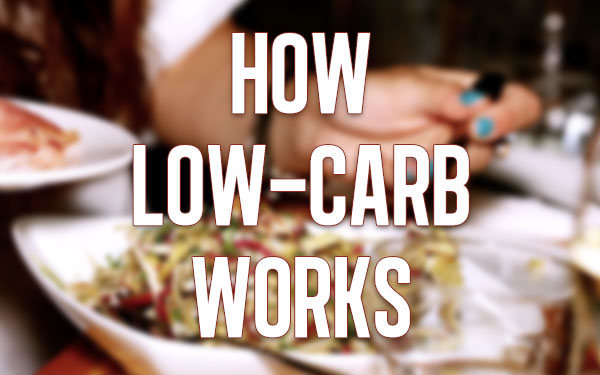

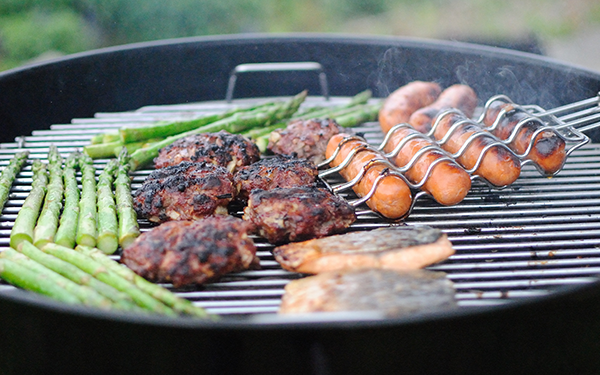
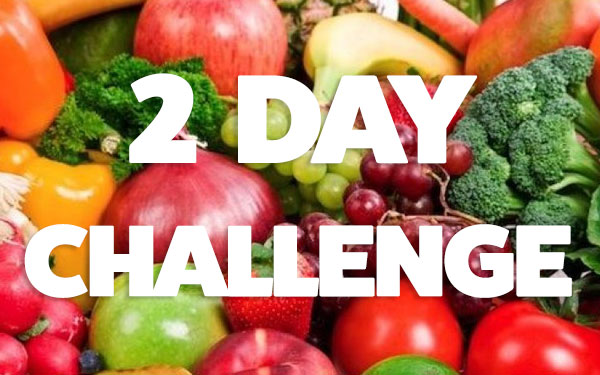

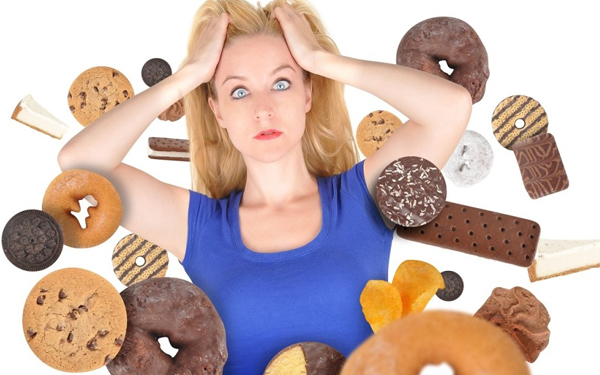

I have not made a bad George Stella recipe yet. I have two of his cookbooks. I am going to try most of the recipes in them. What I love is that I have most of the ingredients he uses in my cupboard. He doesn’t use obscure ingredients. The recipes aren’t complicated or time consuming to make. Thank you, George.